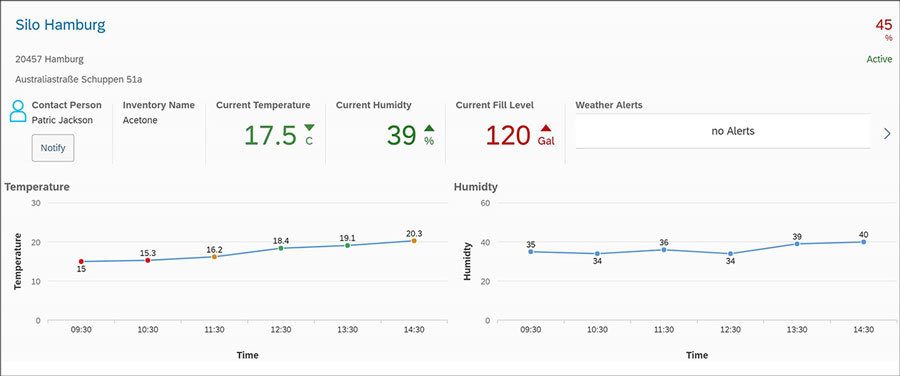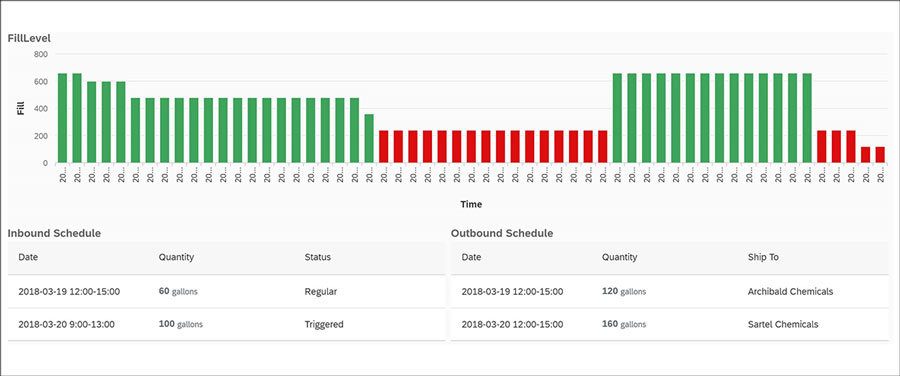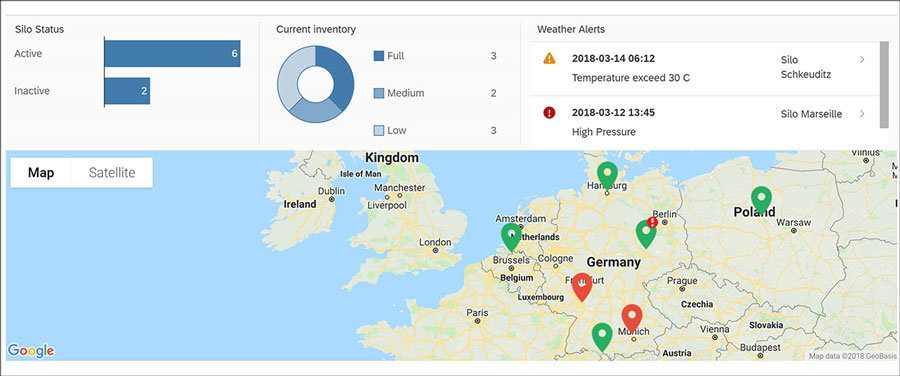Condition Preventative Maintenance

Enhancing shipment coordination
Fill rate monitoring can provide value as a standalone initiative by allowing you to detect any leaks or theft. However, the biggest benefits lie in the integration of live silo fill levels with inventory movement data: both for the inbound replenishment as well as outbound orders. In its simplest terms, the presence of live IoT information allows us to ensure that the silo is neither too empty nor too full. If outbound orders are scheduled, the required order quantity is compared against projected stock levels, and if the latter is insufficient, a replenishment order can be automatically triggered. At the same time, if a silo is due to receive an inbound delivery but there is insufficient storage capacity, the order can be re-routed to a better-suited location.

Gaining holistic overview
An IoT initiative has the potential to provide a holistic and intuitive overview of all the silos relevant for a specific user. By integrating live sensor readings with business data, such as silo content and delivery schedules, as well as external factors such as weather, it is possible to give the silo manager a second-by-second view of his/her entire operation. By providing the most relevant information, in a timely and actionable manner, this IoT dashboard empowers the associated user to concentrate on the value-add part of his/her job rather than spend the bulk of the time trying to collect and process the right data.

The purpose of this post was to provide an introduction into the practical and concrete ways that an IoT initiative can provide value for commercial silo operations. As with any IoT implementation it is important to remember that such a project must carefully coordinate the associated physical and IT technology, as well as personnel training and business process management. To discuss in more detail, reach out to us.
Share this article
